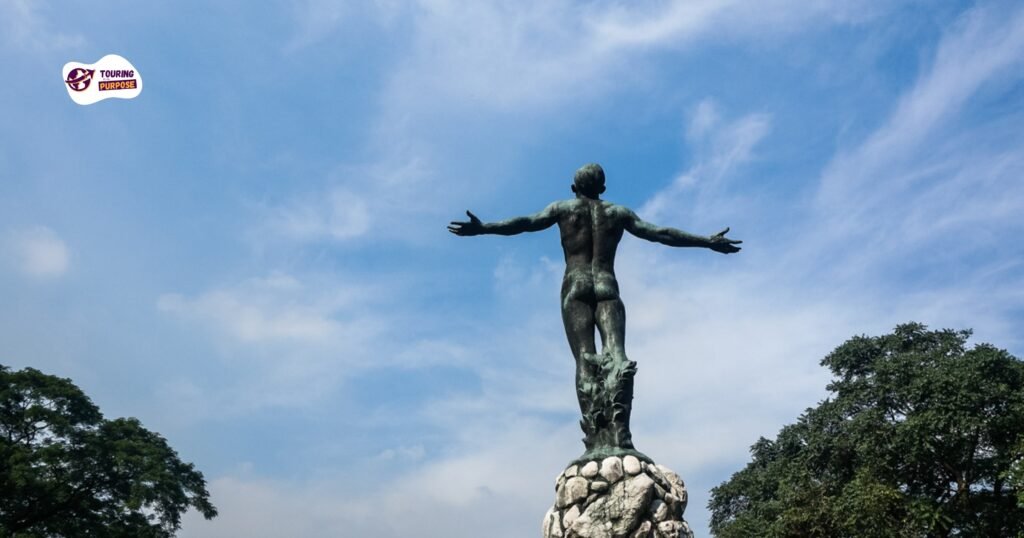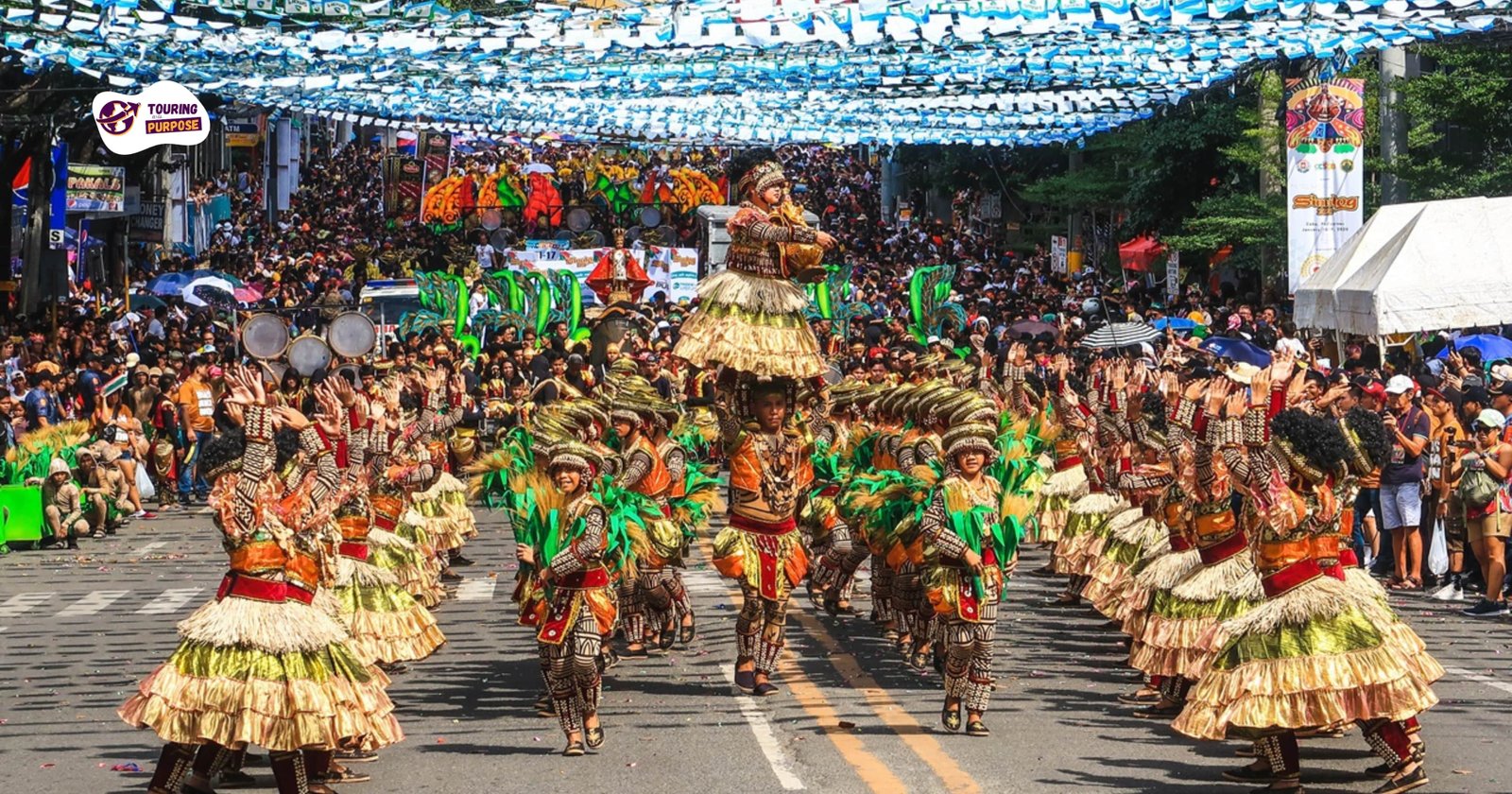Rice terraces, historic churches, and skilled ‘dream weavers’ represent just a glimpse of the Philippines’ abundant cultural treasures waiting to be explored by adventurous travelers willing to venture beyond the well-trodden routes.
The Philippines, an archipelago country located in Southeast Asia, offers a wealth of cultural tourism opportunities. The rich tapestry of the Philippine culture owes its vibrant and multifaceted nature to a history marked by a blend of indigenous traditions and foreign influences.
One prime example is the Baroque Churches of the Philippines, an example of cultural tourism in the Philippines, a UNESCO World Heritage Site comprised of four churches built during the Spanish colonial period. Their unique architectural style is a fusion of European Baroque design and native Filipino craftsmanship, serving as a testament to the country’s rich cultural history.
Introduction
Cultural tourism in the Philippines offers a captivating journey into the heart of a diverse nation rich in history, traditions, and indigenous cultures.
From the northernmost region of Luzon to the southernmost islands, the Philippines boasts a colorful tapestry of customs, rituals, arts, examples of cultural tourism in the Philippines, and heritage that beckon travelers to explore its unique offerings.
In this comprehensive guide, we will delve into the essence of cultural tourism in the Philippines, offering insights into the destinations, experiences, and cultural heritage that make this Southeast Asian country a must-visit for cultural enthusiasts.

1. Philippine Cultural Heritage
Historical Significance
- The Philippines has a layered history, with influences from indigenous communities, Spanish colonization, American occupation, and Japanese wartime presence. Each of these historical layers contributes to the nation’s cultural diversity.
Cultural Diversity
- The Philippines is home to over 175 ethnic groups, each with its language, traditions, and rituals.
- This diversity is showcased in the country’s festivals, cuisine, and arts.
2. Cultural Tourism Destinations in the Philippines
Vigan, Ilocos Sur
- Vigan is a UNESCO World Heritage City known for its well-preserved Spanish colonial architecture. Travelers can explore cobblestone streets, visit ancestral houses, and immerse themselves in the rich culture of the Ilocano people.
Banaue, Ifugao
- Banaue is famous for its ancient rice terraces, often referred to as the “Eighth Wonder of the World.”
- Visitors can learn about the indigenous Ifugao culture and experience traditional rituals.
Intramuros, Manila
- Intramuros is the historic walled city of Manila, offering a glimpse into the Spanish colonial era. Highlights include Fort Santiago, San Agustin Church, and the Baluarte de San Diego.
Sagada, Mountain Province
- Sagada is known for its stunning landscapes and burial caves. Cultural experiences include witnessing the hanging coffins and participating in traditional rituals.
Bohol
- Bohol is famous for the Chocolate Hills and the tarsier, one of the world’s smallest primates.
- The province is rich in cultural festivals and traditions, such as the Sandugo Festival.

3. Cultural Festivals in the Philippines
Sinulog Festival, Cebu City
- Sinulog is a vibrant festival that honors the Santo Niño, the child Jesus. It features a grand parade with dancers in colorful costumes and lively music.
Ati-Atihan Festival, Kalibo, Aklan
- Ati-Atihan is a lively festival celebrating the arrival of the Malay settlers in the Philippines. It features traditional Visayan music, indigenous costumes, and face painting.
Panagbenga Festival, Baguio City
- Panagbenga, or the “Flower Festival,” is a month-long celebration of flowers and the bountiful harvest. It includes a grand float parade and street dancing.
Pahiyas Festival, Lucban, Quezon
- Pahiyas is a harvest festival celebrated with colorful displays of agricultural produce.
- Houses are adorned with creative decorations made from rice, fruits, vegetables, and other products.
4. Cultural Experiences in the Philippines
Tribal Encounters
- Travelers can engage with indigenous communities and learn about their traditions, rituals, and way of life.
Traditional Dances and Music
- Cultural performances showcase traditional dances, music, and storytelling.
- Examples include the Tinikling dance and the indigenous gong music of the Cordillera region.
Culinary Adventures
- Filipino cuisine offers a diverse range of flavors, from adobo and sinigang to the unique balut (a fertilized duck egg). Culinary tours and cooking classes provide an immersive experience.

5. Challenges in Cultural Tourism
a. Conservation of Heritage Sites
- Preserving historical and cultural sites from urban development and natural disasters is an ongoing challenge.
b. Environmental Impact
- Ensuring responsible tourism to protect both cultural heritage and the environment is crucial.
c. Empowering Local Communities
- Main Points:
- Ensuring that local communities benefit from tourism and are active participants in cultural tourism activities is vital.
- Efforts are made to ensure equitable income distribution and community involvement.
6. Government Initiatives and Cultural Tourism Promotion
a. National Commission for Culture and the Arts (NCCA)
- The NCCA supports cultural preservation and promotes Filipino arts and heritage.
b. Department of Tourism (DOT)
- The DOT is responsible for tourism promotion and marketing, including cultural tourism.
7. The Future of Cultural Tourism in the Philippines
a. Sustainable Tourism Practices
- The future of cultural tourism depends on responsible and sustainable practices that preserve cultural heritage and protect the environment.
b. Cultural Exchange and Education
- Promoting cultural exchange and education between local communities and tourists is key to preserving traditions and enriching the traveler’s experience.
c. Global Collaboration
- International collaboration and recognition of the Philippines’ cultural heritage ensure its preservation and celebration on the world stage.
Conclusion
Cultural tourism in the Philippines is a multi-faceted experience that encapsulates a nation’s history, diversity, and traditions.
From the Spanish colonial architecture of Vigan to vibrant festivals like Sinulog, an example of cultural tourism in the Philippines, travelers have the opportunity to explore and engage with a rich cultural tapestry.
As the Philippines strives to preserve its cultural heritage, empower local communities, and encourage responsible tourism, it ensures that future generations can continue to experience the unique wonders of this Southeast Asian nation.
FAQs
What is an example of cultural tourism?
A prime example of cultural tourism in the Philippines is a visit to the Banaue Rice Terraces. Recognized as a UNESCO World Heritage Site, an example of cultural tourism in the Philippines, these terraces are a testament to the ingenuity of the Ifugao people, a testament to a centuries-old tradition of rice cultivation. The site offers insight into local customs, traditional farming methods, and the vital relationship between humans and the environment.
What are the 5 types of cultural tourism?
The five types of cultural tourism are Heritage Tourism (visiting historical or heritage sites), Art Tourism (exploring art galleries, museums, and theaters), Urban Cultural Tourism (experiencing city culture, including architecture, urban art, and gastronomy), an example of cultural tourism in the Philippines Rural Cultural Tourism (immersing in rural life and traditions), and Contemporary Culture Tourism (participating in contemporary cultural activities, such as music festivals, sports events, or modern art exhibitions).
Where is cultural tourism most popular?
Cultural tourism is most popular in destinations with a rich historical and cultural legacy. Countries such as Italy, China, France, and India attract millions of visitors annually due to their distinctive heritage, architecture, customs, example of cultural tourism in the Philippines, and culinary delights. These countries provide an immersive cultural experience, making them top choices for cultural tourism.

